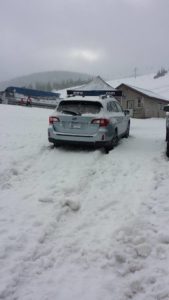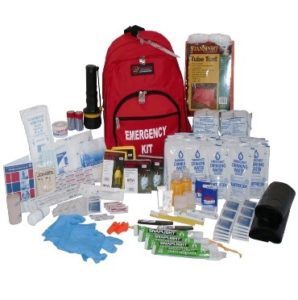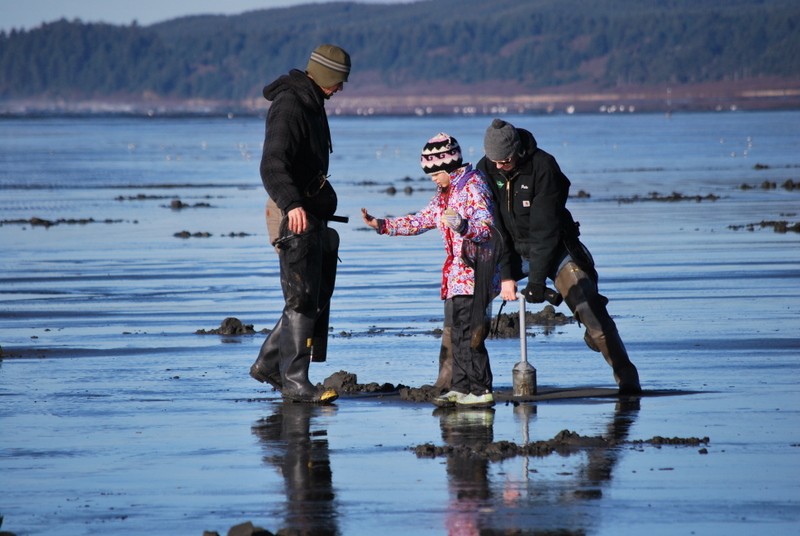During the infamous wind and rain storm of 1995, one Grays Harbor woman made a nearly fatal error: driving down a flooded road. “There was severe flooding in the county that winter,” says Brian Applegate, master service technician at Bruce Titus Automotive Group’s Olympia Chrysler Jeep. “She ended up crawling out of the cab of her pick-up and waiting for someone to come and get her.”
Applegate has heard dozens of stories from customers who were caught unprepared for winter weather. The Grays Harbor example is more extreme than most, but even something as simple as dull windshield wipers can cause major problems when nature turns nasty. Here are Applegate’s top five tips for preparing your vehicle – and yourself – for the storm season.

Check your tire pressure and tread depth. “Whether or not you get snow tires, make sure your tires are in good shape,” says Applegate. “If you’re not comfortable doing it yourself, we can check the air pressure and the tread depth to make sure they’re safe.” A simple way to check tread depth is the so-called ‘Lincoln test’ – inserting a penny into your tire’s tread with Lincoln’s head pointed inward. If you can still see all of his head, it’s time to replace the tire.
Replace old or non-functioning wiper blades. The middle of a mountain pass during a snowstorm is no time to find out that your wiper blades have lost their oomph. If you notice a decline in efficiency, get them replaced, says Applegate. Also consider getting heavier grade wiper fluid, since lighter grades that are effective in summer can freeze on contact with the windshield during winter months.
Check your engine coolant and make sure your antifreeze is at the proper level. Without the right amount, you may discover one morning as you attempt to head to work that your engine has frozen. Most auto supply stores carry kits that allow you to check your coolant levels.
Check your headlights, tail lights and brake lights. “It’s vital for people to be able to see you,” says Applegate. “You want to make sure all of your lights work.” Fully functioning lights also make visibility easier in fog, snow or heavy rain.

Finally, keep an emergency pack in your vehicle. “With all the rain we’ve already had, you want to make sure you have extra supplies,” says Applegate. Those include a flashlight, extra blankets, water, flares, high-energy snacks like nuts or jerky, gloves, a hat, a first aid kit and a means of communication such as a charged cell phone or radio.
When it comes to driving, make sure you’re not following other drivers too closely in winter conditions, he cautions, and be aware of what’s around you. “I love driving in snow,” says Applegate. “My concern is other people. I don’t know their abilities so I’m always looking right and left and at both mirrors. I need to know what’s going on behind me.” He also recommends making sure you have a set of weather proof clothing in case you have to put chains on your tires in freezing temperatures.
For more information about Bruce Titus Automotive Group, visit www.brucetitus.com or call 360-754-5525.
Sponsored




















































